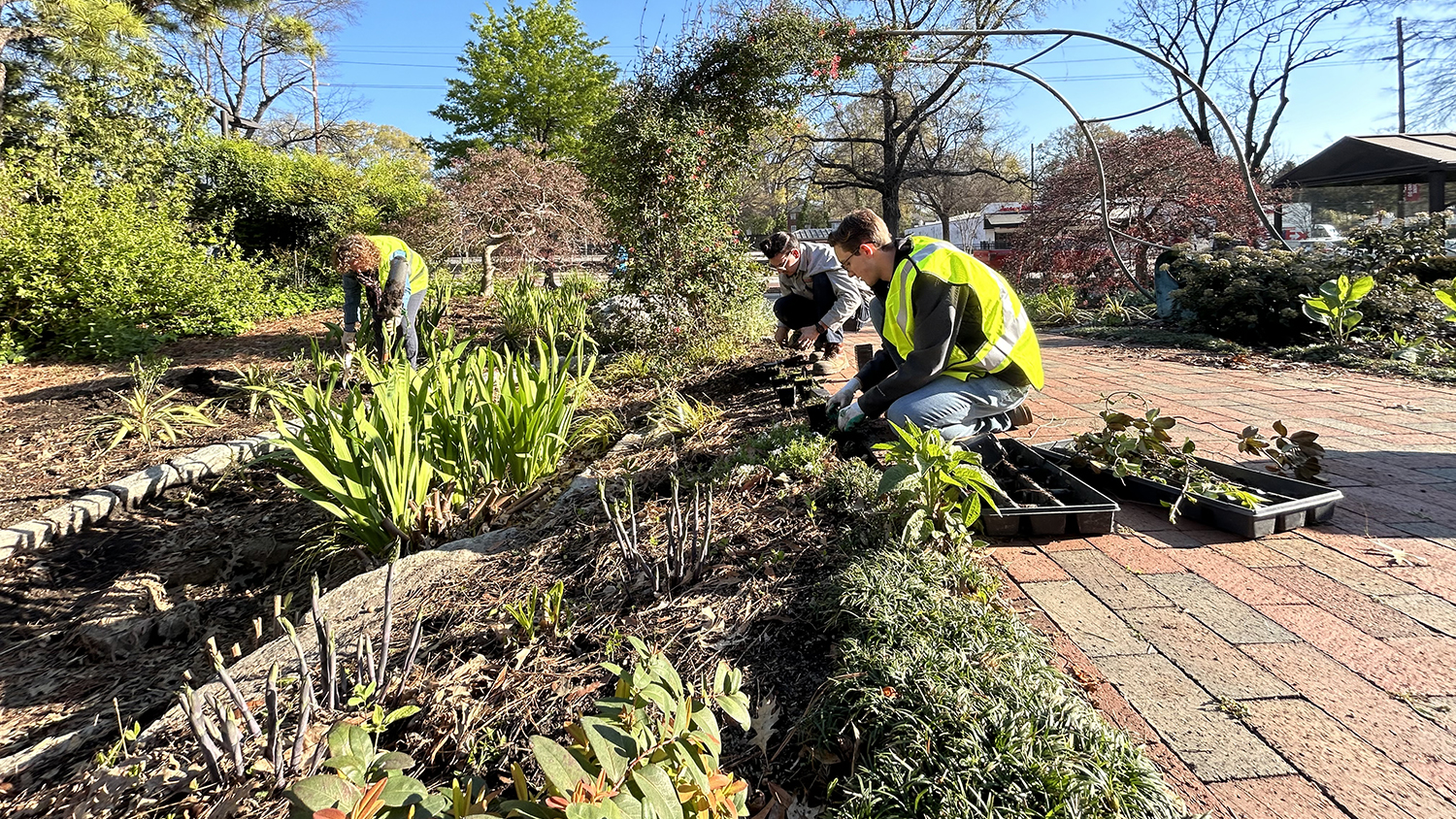Cleaning up fuels of the past
While N.C. State University researchers work to create next-generation fuels, Dr. Michael Hyman examines the opposite of a fuel’s lifecycle, studying how microbes in the soil can degrade gasoline components. And that work has important implications for cleaning up spills and protecting groundwater from contamination.
Hyman, a professor in the Department of Microbiology, has spent nearly a decade working to identify and learn more about the microbes that break down such chemicals as the gasoline additives methyl tertiary butyl ether (MTBE) and tertiary butyl alcohol (TBA). These chemicals are called oxygenates, because they add oxygen to gasoline, making it burn better.
Now banned, MTBE came into use in the 1980s. Because of its branched chemical structure, it resists biodegradation and persists in the environment. MTBE is also highly water soluble, so once it gets into groundwater, it disperses and travels quickly, making cleanup difficult and expensive.
“Worldwide,” Hyman says, “the cleanup costs of sites contaminated by gasoline oxygenates are likely to be measured in the billions, rather than the millions, of dollars over the next decades.”
MTBE is an issue because it makes water taste bad and because, when it degrades, it frequently creates TBA, which poses its own set of environmental problems: “Like MTBE, it’s highly water soluble, and it’s thought to be more toxic to humans than MTBE,” he explains.
Hyman’s research has focused on finding out how TBA is produced, which soil-borne micro-organisms can degrade it and how they do that. The scientist has also found that TBA is not just an MTBE byproduct, it also comes from other gasoline components containing isobutane.
“If our results with isobutane in gasoline also hold for isobutane in natural gas, our research suggests there are likely to be natural sources of TBA,” Hyman says. “And when you think about companies being sued when TBA contaminates groundwater, it’s a huge issue. What people assume comes from MTBE may well just be there because of a naturally occurring oxidation process.”
To help resolve that issue, Hyman and his colleagues are studying ways to pinpoint where the TBA comes from – whether it’s coming from MTBE, from other gasoline components or from naturally occurring hydrocarbon seeps.
Hyman also consults frequently with environmental engineers and others involved in cleaning up MTBE and TBA. Understanding the physiology of the micro-organisms that can degrade these chemicals can lead to better technologies to clean the chemicals from the environment, Hyman says.
“If you understand the physiology of a micro-organism – how they work, how they respond, what they do with particular chemicals – you can actually encourage them, through manipulation of their environment, to do what you want better, faster, cheaper,” Hyman says. “And for the bioremediation industry, that’s a great boon.”


